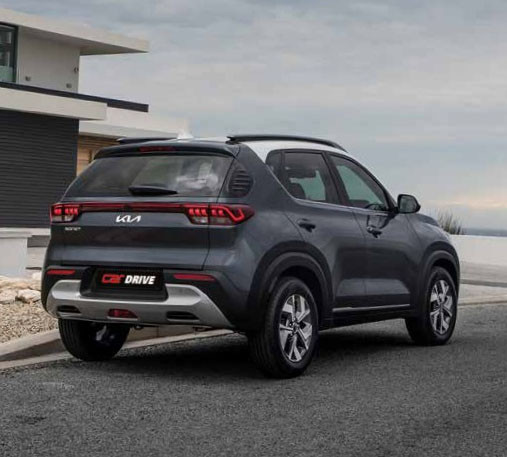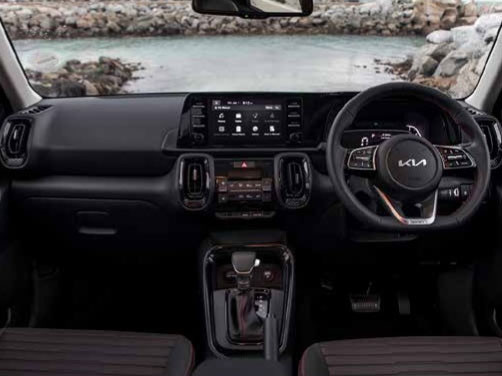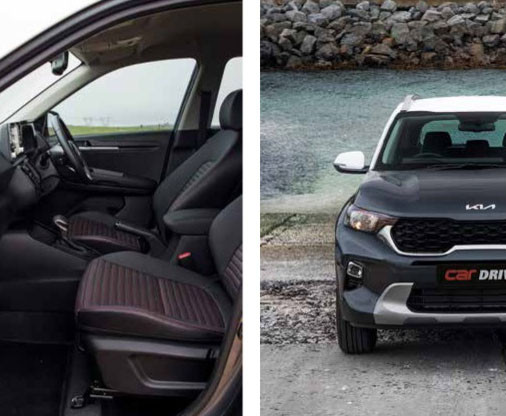2023 KIA Sonet 1.0 T-GDI 7DCT EX
Turbocharged tyke. A touch of turbocharging breathes new life into Kia’s baby crossover
Since its introduction to the SA market just over a year ago, the Kia Sonet’s combination of rakish good looks, solid build and pleasing road manners has garnered it a great deal of praise from the motoring public. But while its talent spread is broad, the turbopetrol-shaped hole in the Sonet line-up has been something of a glaring omission in a compact-crossover landscape in which 78% of the models on offer now feature turbocharged powerplants. Now, Kia SA has introduced a brace of newcomers with forced-induction engines into the fray… could this extra power be the thing to elevate the already impressive Sonet from good to great? We sampled the EX model on the local launch in Cape Town to find out.

We’ve been enamoured with the Sonet since its arrival last year. The only criticism we’ve been able to level at the model range was it was serviced by a single engine offering. The 1,5- litre Smartstream four-cylinder is a peppy little engine, producing 85 kW, but its 144 N.m of peak torque meant it wanted for some low-to-mid-rev urge. The introduction of the 1,0-litre Kappa G3LC motor – a Hyundai-Kia unit that sees service in the likes of the Hyundai i20 – in the latest additions to the Sonet range usher in a modest 3 kW rise in peak power to 88 kW, but the maximum torque has climbed by 28 N.m to an altogether heartier 172 N.m. In the Sonet, this unit is coupled with a 7-speed dual-clutch automatic transmission.

Our launch route encompassed a variety of roads, including long stretches of the N2 motorway, twisting coastal meanders and some steady inclines into the Overberg. The initial bit of town cut-and-thrust towards the N2 showed off this Sonet’s newfound urgency. Where the 1,5 verion occasionally felt a little flat-footed when grabbing gaps in traffic, the turbo’s extra low-end shove made light work of weaving through throngs of commuters and entering motorway slip roads.
Once on the national road, the turbo’s stronger mid-range meant overtaking and keeping pace with fast-moving traffic was similarly stress free. Mechanical refinement is decent; just a hint of three-cylinder burble permeated an otherwise well-sealed cabin as speeds climbed, while the dual-clutch ’box proved both smooth and keen to downshift when leaning on the throttle.
On the curves of Clarence Drive’s coastal road and a mixture of long stretches and tight turns punctuating the route between Pringle Bay and Arabella, the Sonet continued to please, and despite its high centre of gravity, body control is impressively composed, aided in no small part by power steering that’s light, but responsive.
Deviating slightly from the prescribed launch route, we ventured onto the Highlands Road to see how the turbo would acquit itself. Thanks to a handy 190 mm of ground clearance and compliant suspension setup, the Sonet soaked up corrugations without jiggling its occupants into submission. Despite its entry-point placing in the turbo range, the EX features electronic stability control, which did a good job of throttling down when traction was compromised.
While our drive in the sole EX model on the launch was more a function of being a bit late out of the blocks come car allocation time than anything else, the opportunity to drive this entry-level example was still quite fortuitous. The omissions in standard specification compared with the EX+ aren’t exactly dealbreakers. Granted, EX+ does usher in side- and curtain airbags as eminently useful safety features, though the majority of its extras, such as LED brakelamps, a TFT instrument cluster, electrically folding wing mirrors, climate control, cruise control, climate control and a drivetrain management system are nice-to-haves.
The EX is still a well-equipped model; features like a wireless smartphone-enabled touchscreen infotainment system, rear park distance control with camera, ABS with EBD, hill-start assist, auto headlamps and 16-inch alloy wheels are all present and correct. Perceived quality remains impressive and the cloth upholstery used in lieu of the artificial leather in the EX+ feels durable and comfy.More importantly, both models are covered by a five-year/ unlimited-kilometre warranty and a competitive four-year/60 000 km service plan.
Given the Sonet’s admittedly impressive showing in the SA market, with more than 3 500 examples having found homes since its introduction and the virtues of its road manners, solid build and distinctive styling, the addition of a torquey turbopetrol has only bolstered its already considerable appeal. Factor in a solid standard specification lineup and competitive pricing, and the turbocharged models will without a doubt give Kia’s little crossover a much-deserved shot in the arm.

- 01 Striking brakelamp bar is just part of anvappealing visual package including two-tone paintwork.
- 02 Comfortable, with plenty of room up front.
- 03 Signature Tiger Nose grille a Kia staple.
- 04 Cabin is solid and ergonomically sound with intuitive tech.
TECHNICAL DATA2023 KIA Sonet 1.0 T-GDI 7DCT EX
- Price: R359 995
- Engine: 1,0-litre, inline-four turbo-petrol
- Transmission: 7-speed, dual-clutch automatic
- Max Power: 88 kW @ 6 000 r/min
- Max Torque: 172 N.m @ 1 500–4 000 r/min
- 0–100 km/h: 11,3 seconds*
- Top speed: 185 km/h
- Fuel consumption: 6,0 L/100 km*
- CO2: 137 g/km
- Rivals: Ford EcoSport, Hyundai Venue, Volkswagen T-Cross, Toyota Urban Cruiser/Suzuki Vitara Brezza
- +turbocharged engine adds some welcome urge
- — it’s up against some tough and well-established rivals


